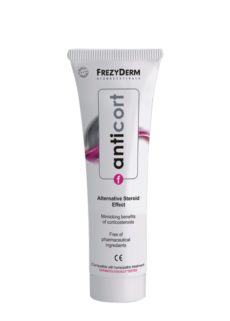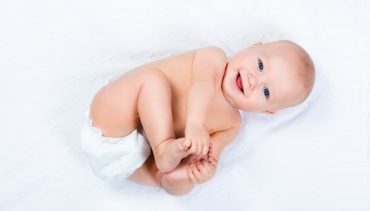
How to Tell the Difference Between Nappy Rash and Eczema
Toddlers and babies can often get a wide range of skin problems. Two of the most common are nappy rash and eczema. These skin conditions do look similar, so telling the two apart can be a bit tricky. Correctly identifying the skin problem means you can give the right treatment.
See below for our FAQs on how to tell the difference between nappy rash and eczema.
Nappy Rash
What is it?
Nappy rash is caused by wetness, generally from poo and wee touching the skin, causing irritation. Younger toddlers and newborns tend to wee more so they are more likely to get nappy rash than older, dryer kids. But it also happens when wet nappies are left on for too long.
What does it look like?
Nappy sore, red, angry looking skin. Sometimes it can look shiny or pimply but it’s always inflamed.
Where is it?
Nappy rash forms around the wet areas on or around your baby’s bottom and genitals.
How to treat it
Nappy rash can be treated and prevented by making sure your baby is cleaned, dried and changed into dry nappies as soon as possible.
A healing cream to ease discomfort, speed up recovery and prevent nappy rash coming back is one of the best ways to treat your baby.
We suggest our Baby Cream. This cream leaves a wonderfully protective barrier that prevents your baby’s skin from getting irritated by moisture.
A low percentage of zinc oxide reduces irritation and rashes whilst the chamomile oils in the cream soothe and reduces inflammation.
Eczema
What is it?
Eczema is a dry, itchy skin condition common in one in five children. It often appears for the first time in a child’s first two years.
What does it look like?
Eczema is generally red, inflamed, itchy looking dry skin.
Where is it?
Eczema in babies often appears on their cheeks, creases of the arms, ankles and knees and sometimes behind the ears and neck.
How to treat it
How best to treat your baby’s eczema depends on how bad it is. If your child has mild eczema with not so bad itchy rashes then a simple moisturising emollient cream or lotion might be enough.
Our Atoprel Emollient Cream relieves the symptoms of atopic and eczematoid dermatitis, contributes to the reduction of the scratching tendency that mechanically aggravates the dry skin (efficacy clinically proven) and provides: epidermal barrier strengthening, moisturization, lipid replenishment, skin protection (Medical device, CE 2803).
To go that extra mile for your baby’s eczema, we suggest out Atoprel Bath Cream. This rich bath cream is perfect for your little one’s dry, irritated eczema-prone skin. Gently hydrating yet cleansing this is ideal addition to baby bath time.















